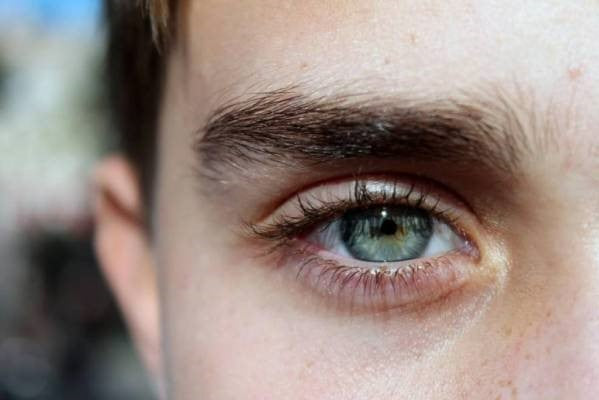Should face shape be considered when wearing rimless glasses?
In our life, we will see a lot of people who wear rimless glasses. Compared with full-frame glasses, there is no restriction on face shape and it suits most face shapes. Whether you have a square face, a long face, or a round face, wearing rimless glasses is trendy and beautiful, very popular among contemporary young businessmen and women. Rimless glasses are very easy to wear. No matter what shape your face is, it will feel stylish and beautiful. Rimless glasses are very simple on collocation dresses. And rimless glasses suit most face shapes, so they are suitable for many people.
Do You Need Long Distance Glasses?
If you are struggling to see things at a distance, you may need a pair of glasses for distance to correct your vision. The symptoms of myopia might include sitting closer to the TV, headaches or eye strain, or rubbing your eyes more than usual. And you can click here to know more symptoms.
If you are over 40 and currently wear glasses for distance vision, you might need to update your lenses at some point to cater for presbyopia, which is an age-related condition whereby your close-up vision can begin to deteriorate.
So, the glasses for distance would be very important for those people who have nearsightedness. If the eye doctor advised you to wear glasses for myopia, you need single vision lenses. This means the lens has one dioptric power throughout, optimized for distance in this case. If you have developed presbyopia, you may need to wear a pair of varifocal glasses to correct your vision.
The Pros of Titanium Glasses
First, titanium is used in its pure form and as an alloy to provide a highly flexible eyeglasses frame. In fact, titanium eyeglasses are flexible. So, they are able to bend without breaking and can return to their original shape.
Second, titanium glasses come with good durability. Titanium alloy metals produce the world’s most durable eyeglasses frames. Choose a titanium frame and it will be nearly impossible to break.
Third, the titanium glasses are extremely lightweight. They are about 40% lighter than the standard steel glasses frames. In addition, due to the superior strength of the titanium frame, the frames can be made thinner making for even lighter frames.
Fourth, titanium glasses have hypoallergenic properties. It is rare anyone experiences adverse skin reactions to titanium frames. There are many other options on titanium frames such as color, texture, and patterns. What’s more, titanium glasses are corrosion-resistant.
So, are titanium glasses worth it? You may have the answers.
Discoloration time and fading time for color-changing lenses
In general, color-changing lenses take about 30 seconds to 1 minute to darken on average when exposed to sunlight/UV and will continue to darken for about 10 minutes to reach the lens depth of full-color sunglasses. Color-changing lenses of good quality and workmanship are restored to an almost clear and transparent state in 2 minutes and completely cleared in 5 minutes, although the high temperature can affect this. If you want to change a single color change lens, the color of the old and new lenses will be inconsistent. This is because the discoloration performance of the old lens will be reduced due to the long-term use of the discoloration agent. Therefore, in order to ensure the normal use and aesthetic appearance, it is usually recommended to replace the two lenses at the same time.
Bifocal Lens
Bifocal lenses have two observation areas separated by visible lines, a larger observation distance area, and a smaller reading area. It may take some time for people who are wearing bifocal glasses for the first time to get used to the lenses. This is mainly due to learning how to move the eyes between the observation distance area and the reading area. Some people will also find that there will be an 'image jump' phenomenon at the visible line between the distance and the reading area, especially for those with limited mobility, who must look down when walking. The best way to get used to bifocals is to wear them as much as possible.
What kind of lens is a progressive lens?
Progressive lenses are optical lenses designed for simultaneous correction of far, medium (for computer use), and near (for reading). They are Progressive Additional Lenses (PAL). The so-called progressive, The so-called progressive, is the use of polishing technology to achieve a gradual transition between the two focal lengths. The advantage of this design is that the wearer can see far and near objects alternately without taking off the glasses.
Consider possible uncertainties after the lens is installed.
Usually, in-store frames are made of plastic samples rather than actual lenses, so they weigh slightly less. However, it is necessary to consider the approximate weight of the lens in advance according to its own degree when trying it on, in case the weight is not suitable for real wearing. If the pupil distance is too small, it is not suitable to wear a wider frame. The machinist should strictly follow the left and right pupil distance instead of taking the average, otherwise, there will be pupil distance error in the left and right eyes, which will cause discomfort in wearing.











































